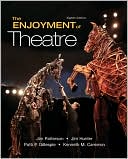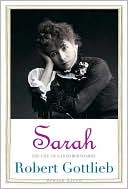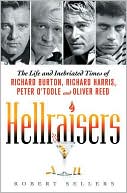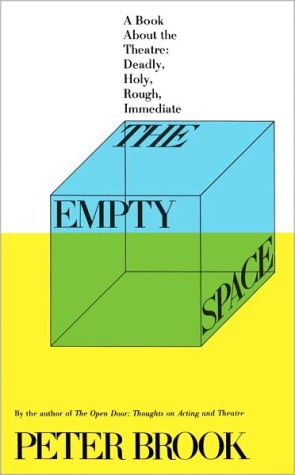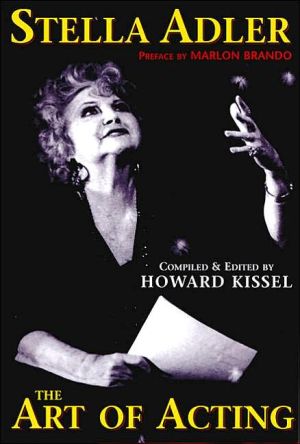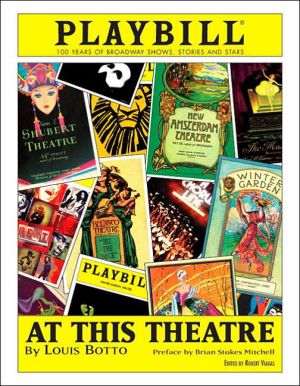The Enjoyment of Theatre
Search in google:
Updated in a new 8th edition, this book offers a balance of history and performance that brings theatre to life for readers by showing the relationship and relevance of the performing arts to their everyday lives.This book covers the full span of theatre's 2,500-year history as well as performance/production topics such as playwriting, acting, directing, and the theatre industry. This updated edition is presented in full-color for the first time.
PrefacePART I: Locating Theatre, Experiencing Plays: Theory and CriticismChapter 1: Theatre: Performance and ArtWhy TheatreTheatre as PerformanceTheatre as ArtTheatre as Performing ArtKey TermsChapter 2: Theatre: The Performing Audience: Three RolesWindow on the WorldTheatre as Art: The Role of the AudienceTheatre as Cultural Expression: The Role of the AudienceTheatre as Business: The Role of the AudienceKey TermsChapter 3: How to Read a PlaySeeing versus ReadingPreliminary WorkPlay Analysis Using the Parts of the PlayOrganizing a ResponseKey TermsChapter 4: How to See a PlayExperiencing the PerformancePreliminary WorkPerformance AnalysisOrganizing a ResponseKey TermsChapter 5: Mediating the Art and Business of TheatreMediators of Theatre ArtMediators of Theatre BusinessKey TermsPART II: Today’s Theatre and Its Makers: Theatre PracticeChapter 6: Making Theatre Today: The ContextTheatre SpacesTheatrical Venues in the United StatesAmateur TheatreTheatre FundingKey TermsChapter 7: PlaywrightsThe Nature of Playwrights and PlaywritingSources of Plays and PlaywrightsPlaywrights and their CultureThe Playwright’s CareerTraining PlaywrightsFrom Page to Stage: Professional IssuesWhat Is Good Playwriting?Key TermsChapter 8: ActorsThe Nature of ActingTraining ActorsAudition, Rehearsal, and PerformanceWhat Is Good Acting?Key TermsChapter 9: DirectorsThe Nature of DirectingThe Director at WorkTraining DirectorsWhat Is Good Directing?Key TermsChapter 10: Designers and TechniciansThe Nature of DesignDesigners at WorkTraining DesignersWhat Is Good Design?Key TermsPART III: Theatre of Other Times and Places: Theatre HistoryPart IIIa: Facade Stages (534 B.C.E. - c.550 C.E.)Chapter 11: The Theatre of GreeceBackgroundTraits of Greek TheatrePlays and PlaywrightsTheatre Buildings and PracticesThe End of Athens’ Golden AgeKey TermsChapter 12: The Theatre of RomeBackgroundRoman Festivals and TheatreTheatre Buildings, Scenery, Costumes, and MasksAudiencesThe Empire and the End of Roman DramaThe Breakup of the EmpireThe Eastern (Byzantine) Empire and TheatreKey TermsPart IIIb: Emblem, Environment, and Simultaneity (c. 950 - c. 1650)Chapter 13: Theatre in the Middle AgesBackgroundEarly Medieval Drama and TheatreMedieval Culture and Theatre, c.1200—c. 1550The End of Medieval Religious Theatre: The Transformation of Medieval Secular TheatreKey TermsChapter 14: The Golden Ages of England and SpainBackgroundThe Renaissance in the North: The Age of ShakespeareThe Closing of English TheatresThe Spanish Golden AgeTheatres in the EastKey TermsPart IIIc: Illusionism (c. 1550 - 1960)Chapter 15: The Italian RenaissanceMainstream TheatreAn Alternative Theatre: Commedia dell’ArteItal: EclipseKey TermsChapter 16: The Triumph and Decline of NeoclassicismFrench TheatreEnglish Restoration Theatre and Beyond (1660–c. 1750)English Theatre in AmericaKey TermsChapter 17: Successful Failure: Theatre and Reform, 1750 — the 1950sContextThree Countries, Two ExperiencesFirst Wave: Romanticism, 1750—1850Second Wave: Realism, 1850—1950Realism and Naturalism: Three Important LeadersThird Wave: Avant-Gardism, 1890—1950Avant-Garde Theatres and MovementsKey TermsChapter 18: The Rise and Triumph of Commercialism: 1750 - 1950sContextCommercial TheatreDrama in the Commercial TheatreTheatres and Production PracticesThe Decline of Commercial TheatreResponses to Commercial TheatreKey TermsChapter 19: Eclectic Theatre, c. 1950-c.2000ContextAvant-garde TheatreThe Influence of the Avant-gardeProfessional TheatreThe decline and Cultural Displacement of TheatreKey TermsChapter 20: U.S. Theatre, 2000-2010ContextTheatrical ChangesA Faded Avant-gardeCommercial and Not-for-Profit TheatresTheatre Trends in the New MillenniumKey TermsChapter 21: Global TheatreContextThe EastThe Islamic WorldAfricaKey TermsGlossaryIndex
